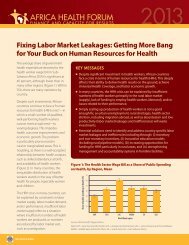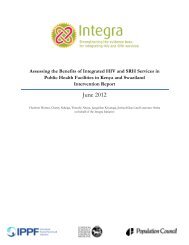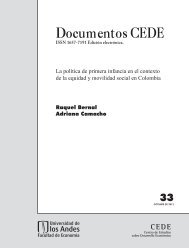ujh78
ujh78
ujh78
You also want an ePaper? Increase the reach of your titles
YUMPU automatically turns print PDFs into web optimized ePapers that Google loves.
1.2 Data<br />
Analyses were performed using DHS data collected in 30 countries from 2000 to 2011. Two<br />
types of data files were included:<br />
• The Household Listing Data – Household Member Recode (PR) files. These files have<br />
one record for every household member and include variables such as sex, age, education,<br />
orphanhood, height and weight measurement, and hemoglobin level. The PR files also<br />
include the characteristics of the households where the child lived or was visiting. The unit of<br />
analysis (case) is the household member.<br />
• The Children (KR) files. These files have one record for every interviewed woman’s child<br />
born in the five years preceding the survey and contain information related to the mother’s<br />
pregnancy and postnatal care and the child’s immunization and health. The KR files include<br />
data on the mother of each of these children. The unit of analysis (case) is the child born to an<br />
interviewed woman in the preceding five years (age 0-59 months).<br />
All countries included in this report are in sub-Saharan Africa, 11 countries are in the eastern<br />
region, 4 in the middle region, 3 in the southern region, and 10 in the western region. Table 1.1 lists the<br />
countries included in this report, the year(s) of fieldwork, and the sample sizes for each country survey by<br />
children’s ages. Table 1.2 reports these same samples according to the child’s sex, urban or rural<br />
residence, and the sex and age (








